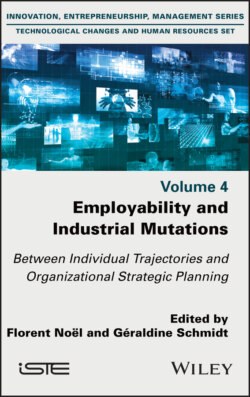Читать книгу Employability and Industrial Mutations - Группа авторов - Страница 21
1.2.1. “Profiling”, from contextual calibration to negotiated interaction
ОглавлениеAmerican-style “profiling” practices (Georges 2007) consist of building and calibrating a statistical model that observes over recent past periods the average time to exit from unemployment for different categories of unemployed and associates them with their characteristics (age, professional specialization, qualification and location). We then try to predict the probability of an unemployed person’s exit from unemployment at a given time by running the model with that person’s characteristics. The coefficients of the model must be re-evaluated very frequently, for example every three or six months. The statistically most employable unemployed receive standard and minimal assistance, while those who are further from employment are targeted with enhanced measures. The average gains from the use of such a model were estimated, in the late 1990s, to be a one-week reduction in the duration of unemployment, a not insignificant gain in the North American context of the time when the average duration of unemployment rarely exceeded a few months. It is thus a rationalization of the care of the unemployed. The interaction with the collective dimensions is minimal here, taking into account only the various “local” labor market contexts in the model.
The “profiling” of the unemployed then spread and was implemented in different ways in different countries. The risk of such an approach is that, under the guise of objectivity, it may lead to a naturalization of individual employability, even when contextualized. Some countries have rejected it outright, as in the case of the public employment service in the United Kingdom, on the grounds that the measure freezes what should in fact evolve, in particular the career orientation and claims of the unemployed. Other countries, the most numerous, have limited themselves to segmenting the unemployed population into a few groups distinguished according to their “distance to employment” and have used this as one diagnostic tool among others; this is notably the case in France.
The law of 13 February 2008 creating Pôle emploi gave the new body bringing together compensation and placement services the task of “improving the employability” of job seekers, in particular by setting up a “profiling” system which positions each unemployed person on one of three paths: the “support” pathway intended for people with a “low distance to employment”, people “whose skills, abilities and salaries are in line with a buoyant market”; the “support“ pathway for jobseekers with a “high distance to employment” “whose job or salary is not in line with the market”. A final pathway is for business creators “whose project has been validated” (Lavitry 2018). This is basically (excluding business creators) a binary distribution according to the probability of exhausting one’s compensation rights. Finally, others have integrated profiling into an approach that takes into account the unemployed person’s assessments and projects in an original way, as in the Netherlands (Georges 2007). The unemployed person is informed of the statistical and operational category into which the profiling calculations lead him/her to be integrated. He or she can then accept or contest this classification, and after discussion with the employment service agents, the classification can be confirmed or modified, for example by taking into account a personal project or a change of direction. In this case, there is a use of optional interaction, putting the person concerned back at the heart of the process for a time.
